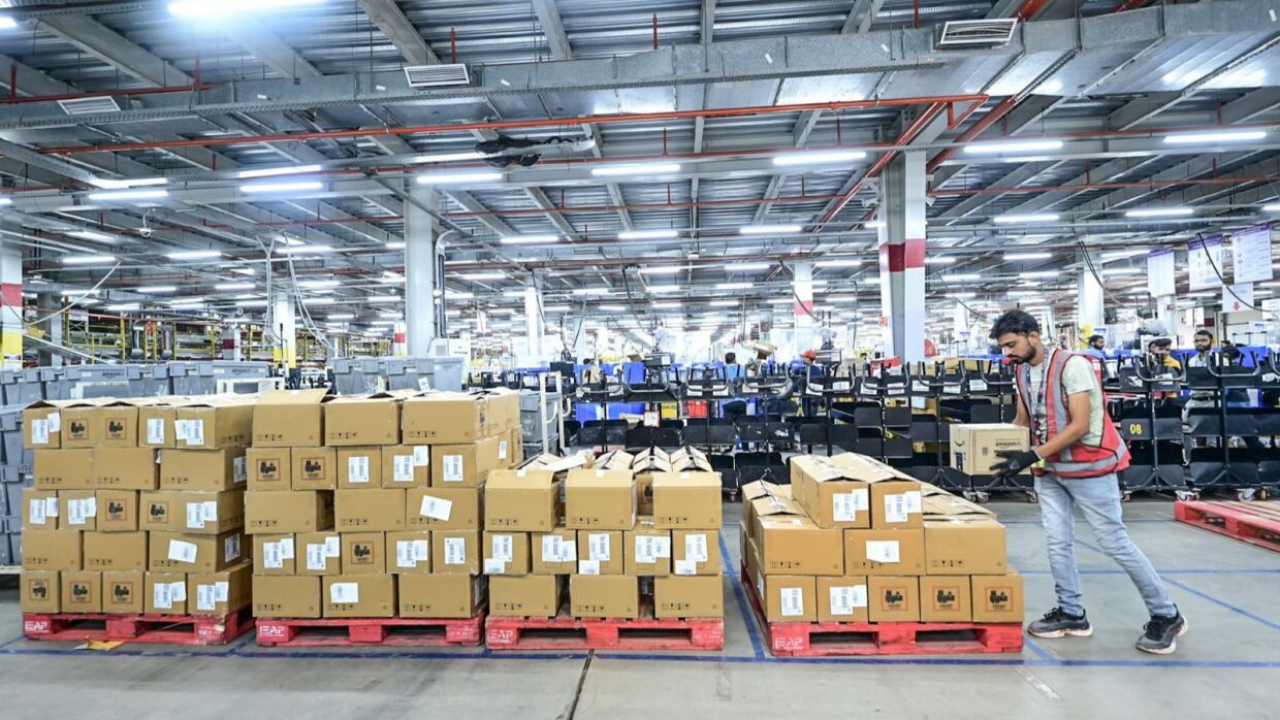 English
English

Could Amazon’s rapid push for AI-driven warehouse automation eliminate hundreds of thousands of jobs by 2027? As robots and “cobots” gear up to replace human workers, what does this mean for the future of employment in America’s logistics sector?

Amazon plans to automate 75% of its fulfillment operations by 2033.
New Delhi: Amazon is quietly accelerating its efforts to automate warehouse operations, aiming to drastically reduce its need for human workers over the next decade. According to an investigative report by The New York Times, internal plans reveal the retail giant intends to automate around 75% of its fulfillment processes by 2033. This shift could potentially prevent the hiring of more than 600,000 U.S. workers.
By 2027 alone, Amazon anticipates it will avoid hiring approximately 160,000 warehouse employees. The company projects this will save roughly 30 cents for every item processed, translating into an estimated $12.6 billion in operational savings from 2025 to 2027. This ambitious push signals a fundamental transformation in how Amazon—and perhaps the entire logistics industry—operates.
Central to Amazon’s plan are “cobots,” or collaborative robots designed to work alongside human employees to streamline sorting, packing, and moving goods. These machines aim to enhance accuracy and efficiency, making warehouses faster and less reliant on manual labor.
Amazon is reportedly experimenting with these robotic assistants behind the scenes, creating a leaner operational network that depends more on automation and less on human input. The company hopes this will not only cut costs but also increase the speed and precision of its fulfillment centers.
Amazon, Flipkart challenge new Indian tax on online sellers
With such a drastic overhaul on the horizon, Amazon is preparing strategies to mitigate public backlash over job losses. Sources say the company is cautious about language, avoiding terms like “AI” or “automation” that could alarm workers and communities. Instead, executives prefer softer phrases like “advanced technology” and highlight the “collaborative” nature of cobots.
Despite these efforts, experts remain skeptical. Nobel laureate economist Daron Acemoglu warned that Amazon’s successful automation could set a precedent for other companies, potentially making Amazon one of the largest net destroyers of jobs in the U.S.

By 2027, automation could prevent 160,000 warehouse hires.
Amazon has pushed back against the narrative presented by leaked documents, calling them the viewpoint of only one internal team rather than official company policy. Spokesperson Kelly Nantel emphasized that Amazon is actively hiring across its operations nationwide, pointing to plans to recruit 250,000 workers for the upcoming holiday season.
The company also denied deliberately avoiding terms like “automation” or “AI” in public discourse, stressing that community outreach initiatives are independent of any automation strategies.
If Amazon’s automation goals come to fruition, the company will fundamentally reshape warehouse work and the logistics industry. Warehouses, once major sources of employment, could transition into highly automated hubs managed by robots and algorithms, requiring far fewer human workers.
The situation poses pressing questions about the future of labor in America, especially for those whose livelihoods depend on fulfillment and logistics jobs. The company that once transformed retail by hiring vast numbers may soon lead a robot-driven revolution that drastically cuts human roles.